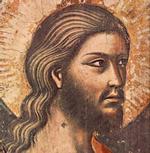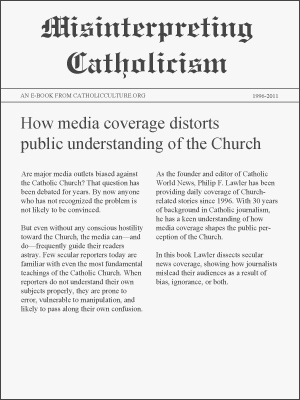The MOST Theological Collection: Our Lady In Doctrine and Devotion
"Preliminaries: Did Vatican II Downgrade Her?"
During the second session of Vatican II, in October, 1963, the media screamed that the Council had just voted to downgrade Mary. What really happened? There had been a very close vote that day on what seemed to be just a procedural question, of where to put the Council's Marian teaching, in the Constitution on the Church, or in a separate document? It was announced that whichever way a Bishop voted, it would not mean downgrading.
Yet there were signs of trouble even before this point. G. Tavard in Council Daybook, 2, p. 52, said that several speakers had charged several Popes with heresy for saying Mary is Mediatrix: "It would be inconsistent for the Council to approve... the use of a term which contradicts the New Testament. As several speakers have pointed out, the term Mediatrix as applied to Mary is incompatible with the teaching of St. Paul." The reference is of course to 1 Tim 2. 5: "There is one Mediator". This amounted to a charge of heresy against several Popes for they had indeed taught that she is Mediatrix. These Popes were: Leo XIII (8 times), St. Pius X (twice), Benedict XV (twice), Pius XI (4 times), Pius XII (twice), John XXIII. They did not always use the same words, but the idea was clearly there. We should observe in passing that if a doctrine is repeatedly taught on the Ordinary Magisterium level, it is to be considered infallible. On the other hand, floor speeches at a Council are not providentially protected. At the first General Council, Nicea, In 325 AD, several Bishops denied the divinity of Christ.
What really happened? Because of strong feelings, it was agreed that each side would pick just one speaker. First Cardinal Santos of the Philippines spoke for those who wanted a separate document. Among other things He said: "She stood, suffering with Him as He died for us, meriting Redemption with Him.... The saving function of Mary who, as a result of the grace of the Redeemer, was associated with Him in the objective redemption itself, is essentially different from the function of others members [of Christ]."
Before going ahead to see the reply from the other faction, we must explain the term objective redemption used by Cardinal Santos. Mariologists distinguish objective redemption, the work of once-for-all acquiring all graces and forgiveness, from the subjective redemption, the work of giving out the fruits of the objective redemption throughout all subsequent times.
We distinguish further immediate and remote cooperation in the objective redemption. Remote cooperation is found in the very fact that she as His Mother gave Him the humanity in which He could die. Immediate cooperation would mean some sort of role in the great sacrifice of Calvary itself.
We used the broad expression "some sort of role," to leave open the question of precisely how her cooperation operated, in what it consisted.
There seems to have been a consensus before Vatican II that she did have an immediate cooperation: it could not be denied, for so many Popes spoke of her as cooperating on Calvary. That would necessarily be immediate.
There were and are two chief positions on just how her cooperation on Calvary operated. Cardinal Santos, in saying that she merited there, was expressing one position. The other position would speak of her role as merely "active receptivity." The partisans of this position ask us to think of someone stretching out a hand. That would be active. But it would be mere receptivity if the hand contributed nothing at all to producing the value it would receive.
It was German Mariologists who held for active receptivity. For example, Otto Semmelroth, in Urbild der Kirche. Organischer Aufbau des Mariengeheimnisses, (Wurzburg, 1950, p. 54) wrote: "Finally, Mary since she is substantially type of the Church, could not do anything other than the Church herself." Of course, the Church was not at hand on Calvary. The Church merely receives what Jesus alone merited. On p. 56 Semmelroth wrote: "So that it [Christ's offering] might be the offering of mankind there was need of the subjective appropriation by this mankind." This surely reminds us of "taking Christ as one's personal Savior" as the Protestants claim, for they say humans contribute nothing at all to their own salvation, they merely receive or appropriate it, make it their own.
What Vatican II really taught on this point we will see in detail later. For now we merely note that the appropriation by mankind was fully provided by the fact that Jesus was the New Adam, the new head of our race. And also, Semmelroth offered no proof that Mary, with her singular role and graces, could not do anything other than what the Church did. There is indeed in just a few of the early Fathers the notion of her as type of the Church, but they do not draw the conclusion Semmelroth drew from it.
Now that we know the view of the German Mariologists, we cannot help wondering if they wanted to put the Marian teaching into the document on the Church in the hope of getting the Council to teach their theory. Most emphatically it did not do that.
So now when we come to the words of the second speaker, who represented those who wanted to put the Marian teaching into the document on the Church, we are a bit puzzled. Cardinal Koenig of Vienna - who also on a different occasion got up and said Scripture contains many errors! - spoke for that group. And even though Cardinal Santos had clearly expressed not only immediate cooperation in the objective redemption, but had said it was done by way of merit, yet Cardinal Koenig opened by saying: "I do not disagree with the things that are explained by the other eminent Father in this matter. I contradict neither as to the doctrine, nor as to the devotion that flows therefrom. In fact, I very gladly and with my heart agree with all these things." As to wanting Marian doctrine in the constitution on the Church he explained: "The Church... is the central theme of this session and this Council. Therefore it is fitting that the Blessed Virgin should not be absent from this central theme, showing the close bond that exists between the teaching on the Church and the teaching on her."
If anyone favored downgrading, Cardinal Koenig spoke for those who would have done so. Yet he said these things. We can see how accurate our media are, though they have a most keen nose for news when they want to.
But the media report, and the attitude of some at the Council had their effect: a great drop in Marian devotion. Yet, we shall see that Vatican II taught more advanced theological positions on her, and spoke more extensively on her than all previous Councils combined.






